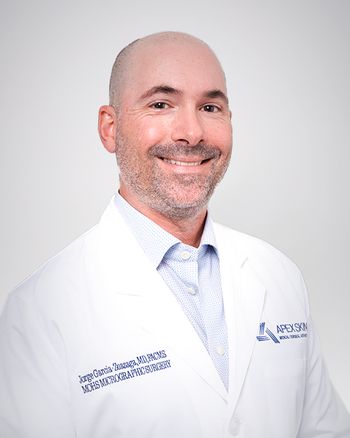
3 Approaches to Creating a Connected Care Future
By integrating capabilities and services, we can create health experiences that are much more than the sum of their parts.
Over the past several years, we have seen and heard much about the transformative changes taking place in healthcare, particularly since the onset of the COVID-19 pandemic. The truth is that health and medicine are always evolving, whether through small advancements or seismic shifts. Those of us in the field of health must follow a similar evolution and become as agile and flexible as possible to meet the needs of the communities we serve.
We recognize that we are all trying to find our footing on shifting ground. Employers pursue strategies to maximize their employee health benefits. Physicians increasingly seek partnership with payers to collaborate in the transition to value-based care. Consumers demand greater transparency and personalized insights to help them make proactive and informed health decisions.
As our industry shifts focus to improving health more proactively, we must work to ensure employees, patients, and consumers have access to services that will meet their whole health needs—not just where they are at this moment, but across their entire healthcare journey. We must also acknowledge the unique challenges and barriers faced by a growing number of Americans with chronic and complex conditions.
Managing chronic and complex conditions can be difficult for some people because it often requires navigating multiple touchpoints in the healthcare system and understanding possible complicated treatment regiments. These challenges require integrating health capabilities and services throughout the healthcare system to provide truly connected care that promotes systemwide efficiency, improves outcomes, and lowers costs. Below are three approaches to make that possible.
Leverage the power of digital platforms to create a better experience
A digital platform approach is key to giving consumers the healthcare experience they deserve. It helps connect health data, systems, and processes to make it easier for consumers to lead healthier lives.
The power of the platform model comes from leveraging data to derive insights that help companies be more proactive. Understanding what consumers need and suppliers have helps companies curate the customer experience and offer the right services to the right people. In the context of healthcare, the platform enables a connected experience where both consumers and providers can leverage the spectrum of care options—digital, virtual, in-home, and in clinics—and access curated data and data-driven insights that empower them to make more informed decisions.
Driving true, sustainable change in healthcare requires going beyond launching a website or consumer app. It requires digital transformation and equity where all consumers have access to quality care and support, when, where, and how they need it.
Make individuals with chronic and complex conditions a priority
The percentage of U.S. adults with multiple chronic conditions is on the rise. In 2018, nearly 52% had at least one chronic condition, and 27% had multiple chronic conditions. Not only do people with chronic conditions face unique barriers to accessing care that addresses their physical, behavioral, and social needs, they are also in danger of experiencing a more fragmented care journey because they use the healthcare system more than individuals without chronic conditions. For these patients, care fragmentation can lead to gaps in care, unnecessary testing and procedures, and higher costs.
For example, many older Americans have multiple chronic conditions that add layers of complexity to routine, acute, and long-term care. Today, a 75-year-old hip replacement candidate with hypertension and Type II diabetes may need assistance understanding every aspect of the pending surgical event and post-operation care. Even if they have assistance from their family, doctor’s office, health insurance company, or other groups in navigating some of these pieces, this person still may struggle with the many aspects of managing their whole health. We envision a healthcare future where the onus of care coordination is removed from the shoulders of the patient and guided by healthcare organizations that can integrate and manage every aspect of care to enhance the healthcare journey and improve outcomes.
We must find ways to create better connected care experiences for these patients, because they are among our most vulnerable populations and often fall through the cracks. An enhanced healthcare journey will help result in better health outcomes for these individuals and possibly help reduce the significant cost of annual healthcare expenditures in this nation—$4.1 trillion.
We know intensive, highly personalized models of care that provide support throughout a person’s health experience can benefit these individuals. By deploying these models and engaging members where they are, via clinics, telehealth, text messaging, and other channels, we can improve health outcomes and aim to decrease cost of care by reducing hospital admissions and other costly medical interventions.
Align your organization to best deliver integrated care
Making the healthcare system more equitable, effective, and efficient is not just a mission—it’s a mandate for action. That mandate must be reflected in the ways we conduct business. We work across different payers and other healthcare organizations and bring together over 150 years of experience across the healthcare industry. By housing under one roof the Carelon healthcare services businesses—including pharmacy, behavioral health, complex and chronic care, and digital platforms—which are part of Elevance Health, we aim to better provide consumers with truly integrated, connected care that improves outcomes and lowers costs.
It is our mission to make connected care possible by putting people at the center and delivering the right balance of care, technology, data-driven insights, and expertise to solve complex challenges and help consumers lead healthier lives. As we actively work to realize our vision for the future of healthcare, we encourage other health organizations, providers, and caregivers alike to take similarly bold moves to connect people to accessible, affordable, and integrated care.
Pete Haytaian is President of Carelon Services. Rajeev Ronanki is President of Carelon Digital Platforms.
Newsletter
Like what you’re reading? Subscribe to Dermatology Times for weekly updates on therapies, innovations, and real-world practice tips.


















